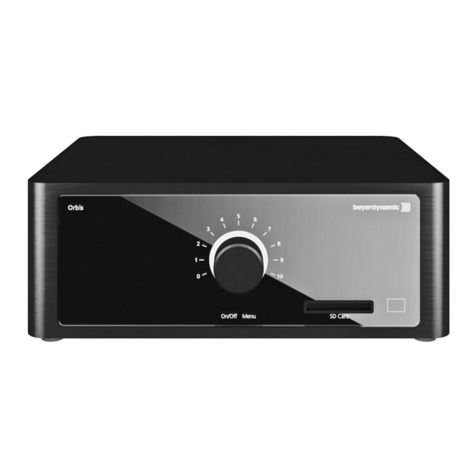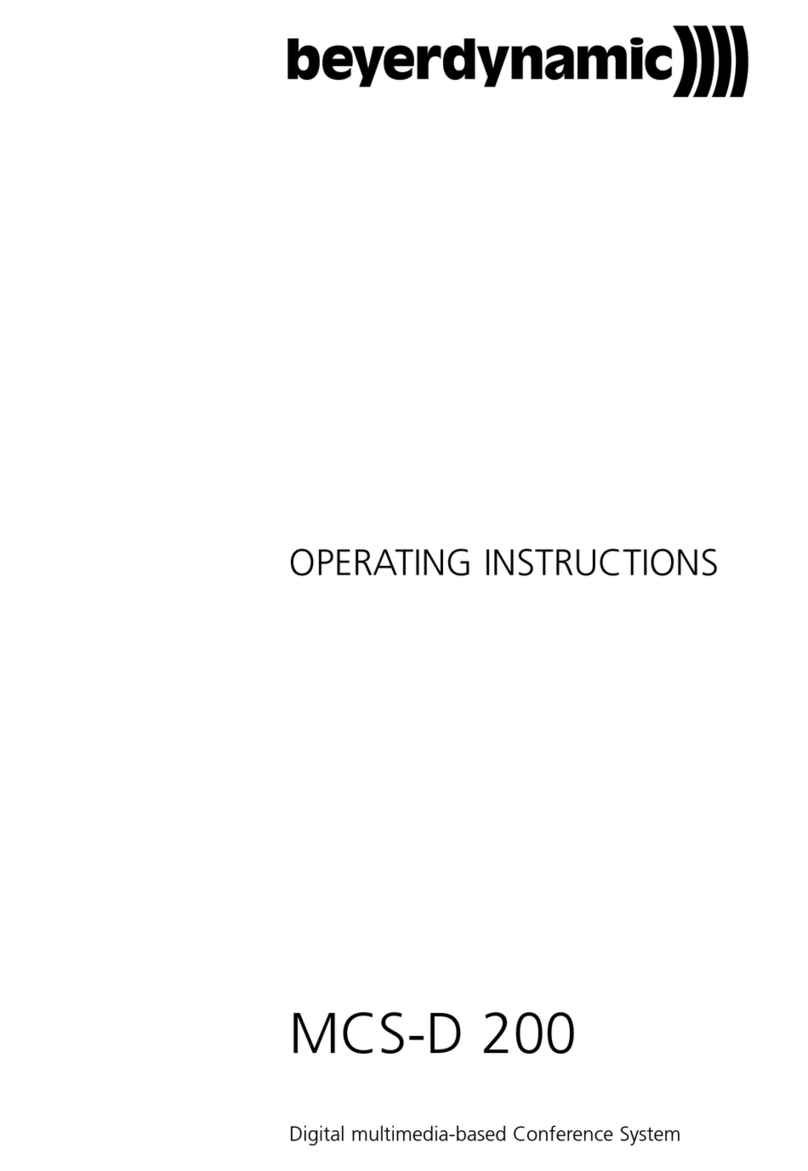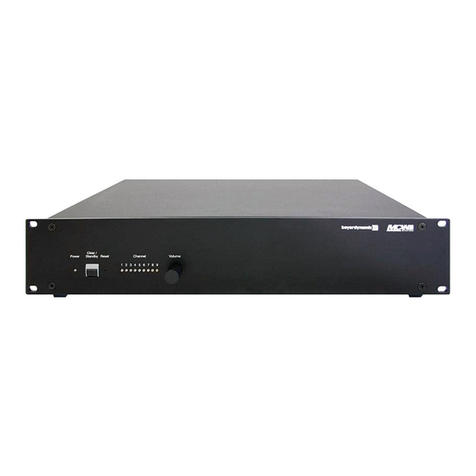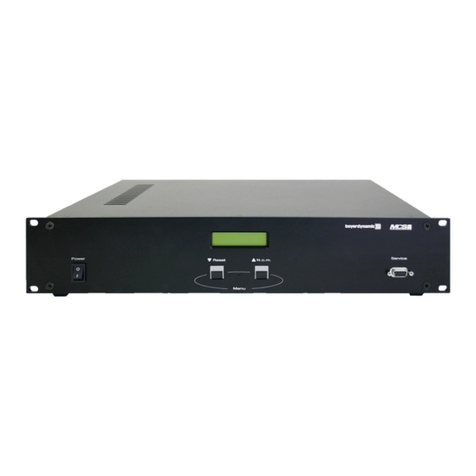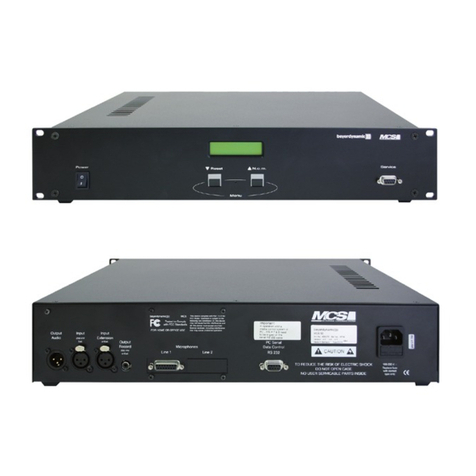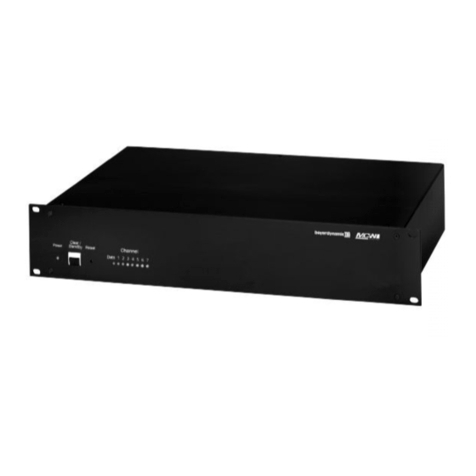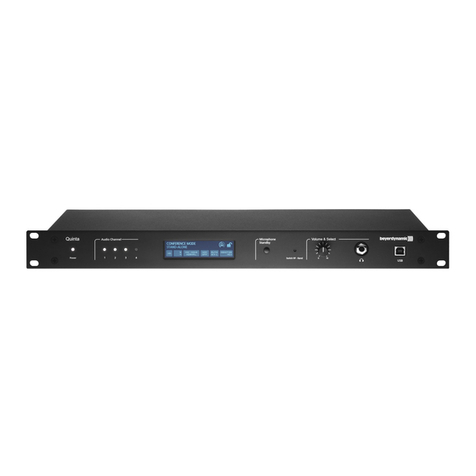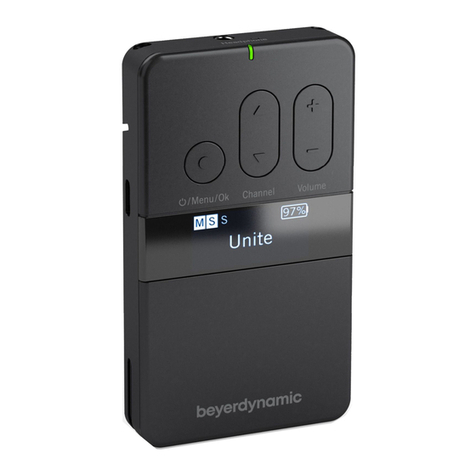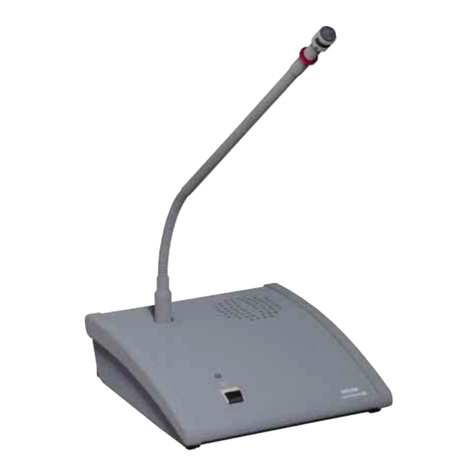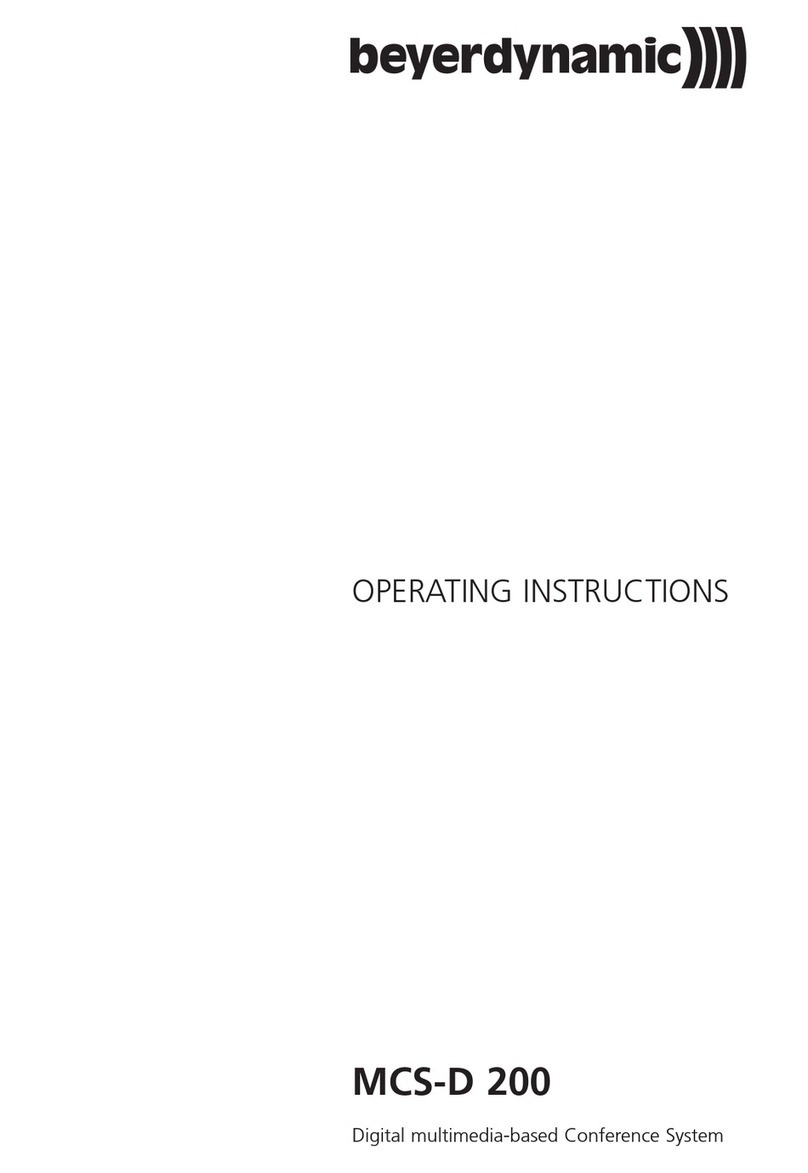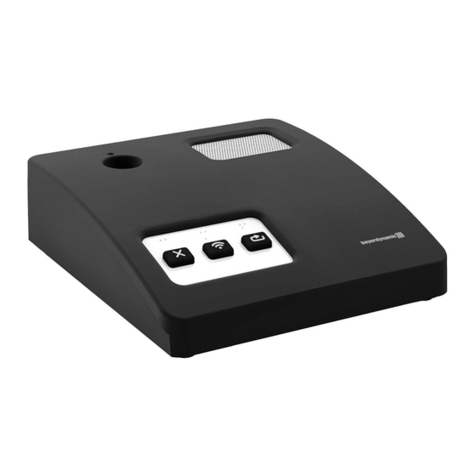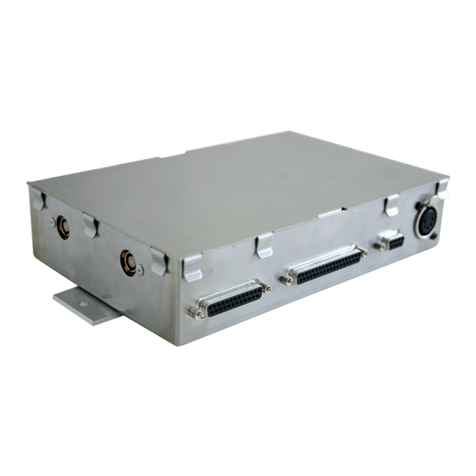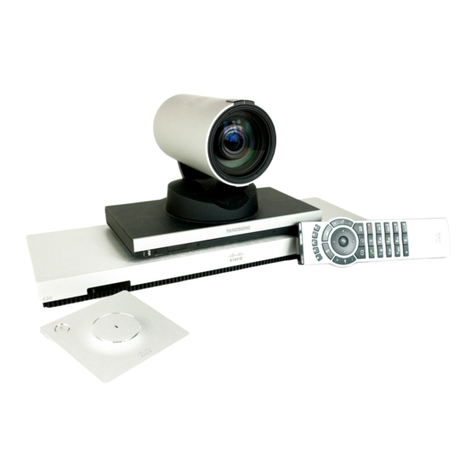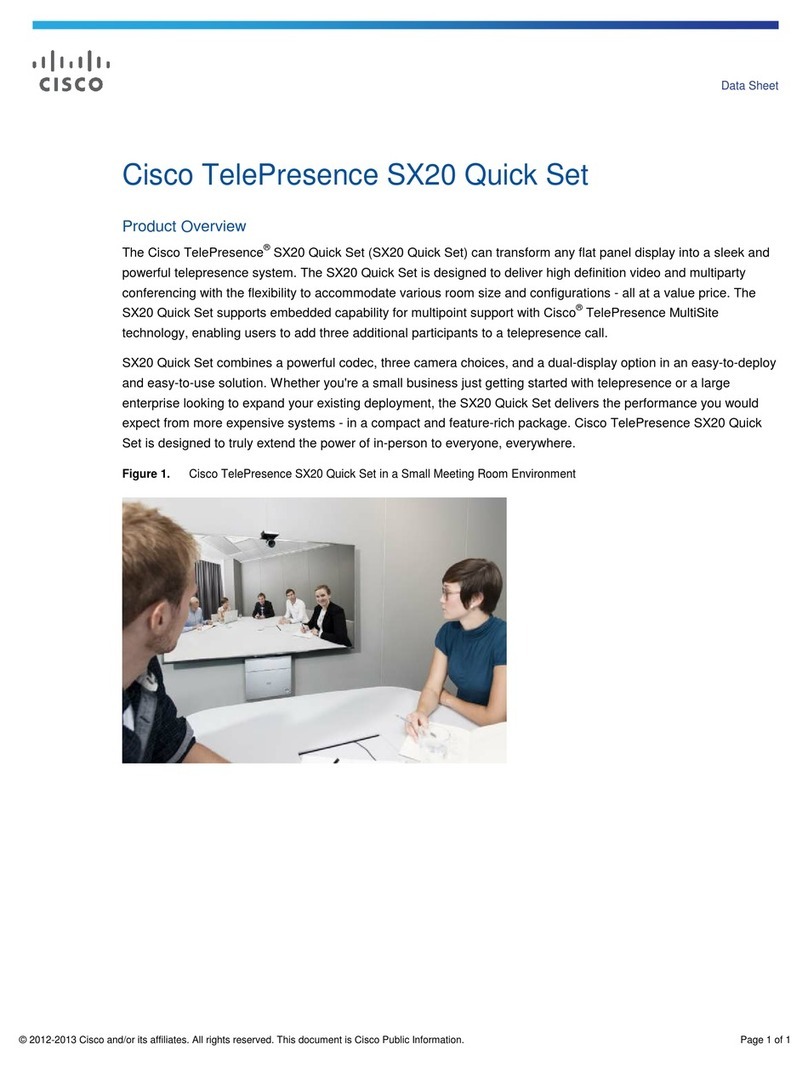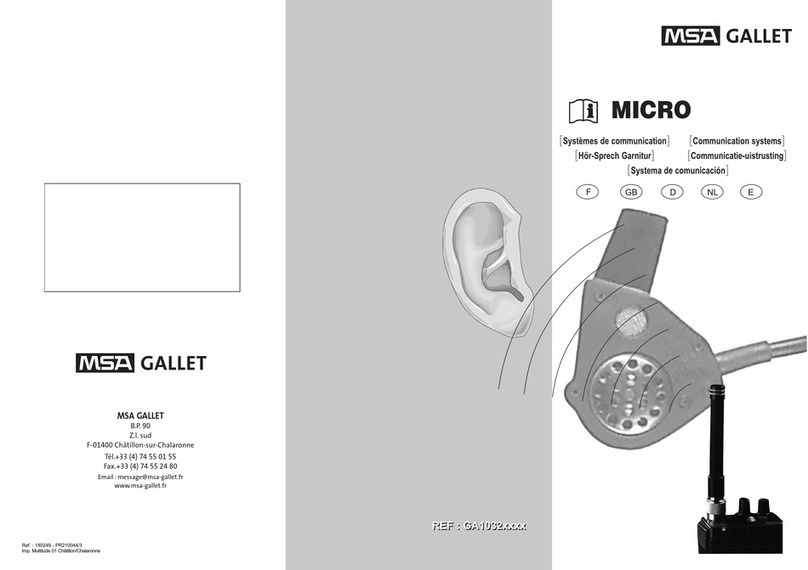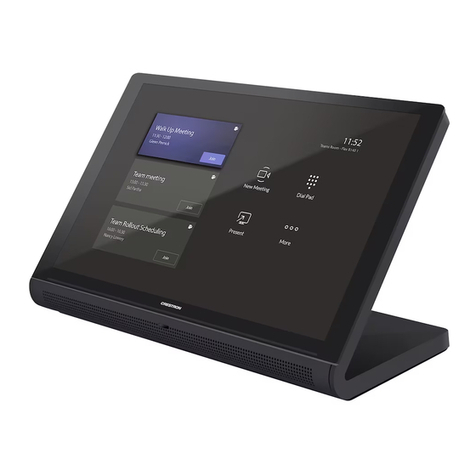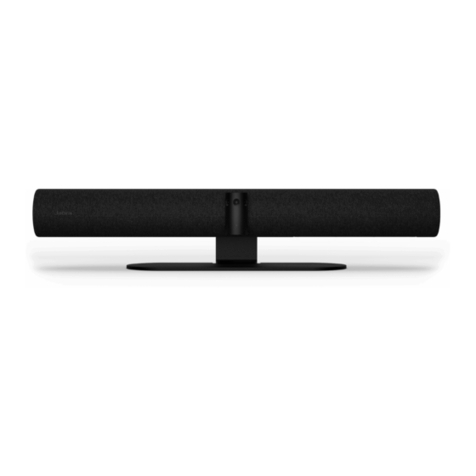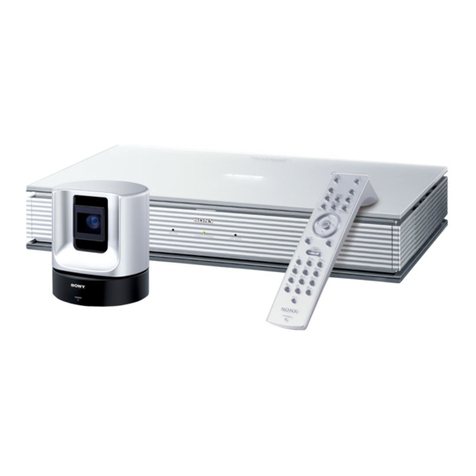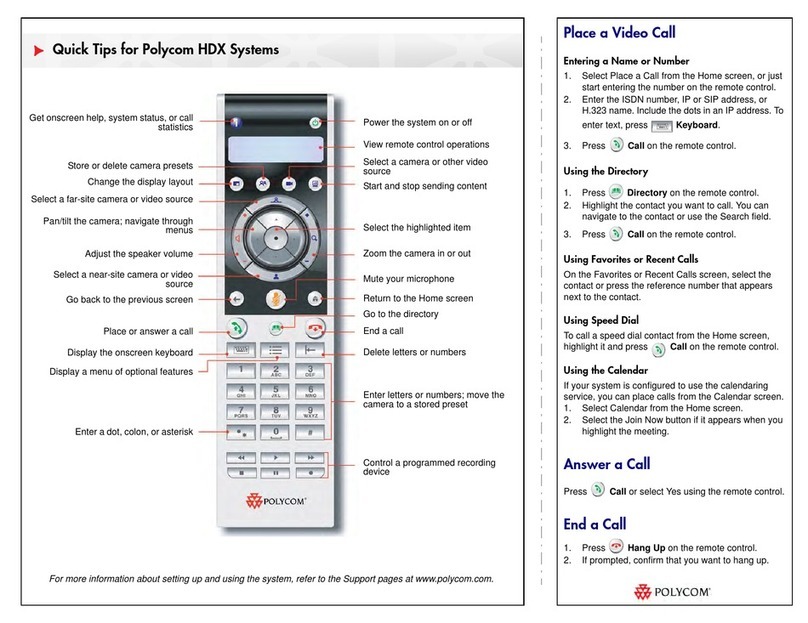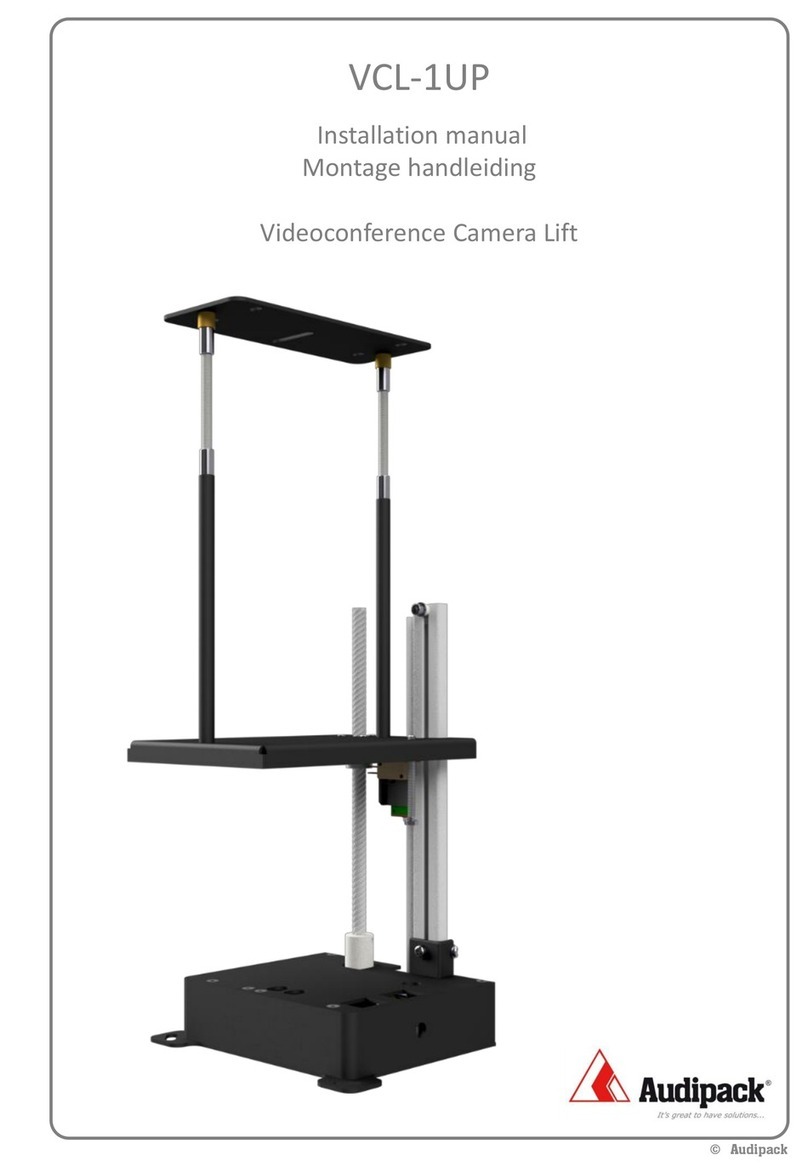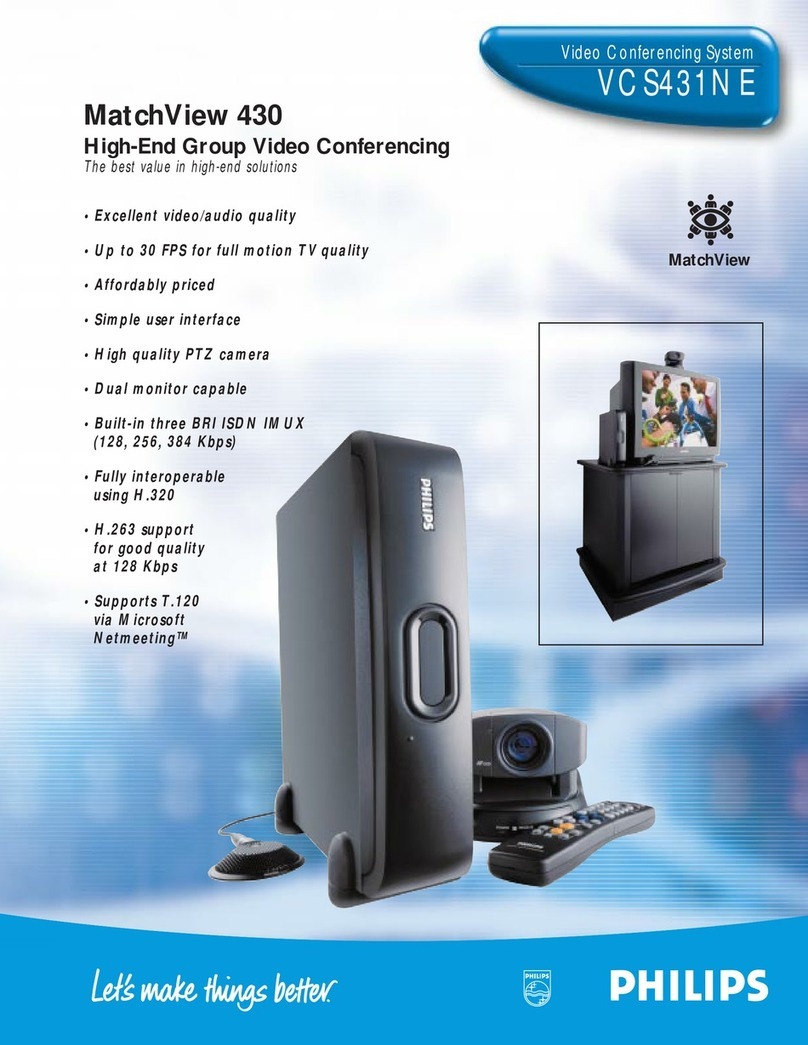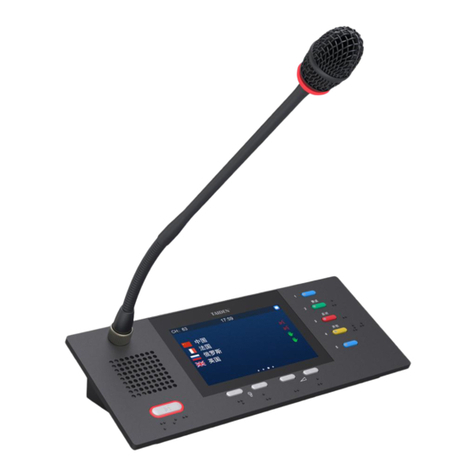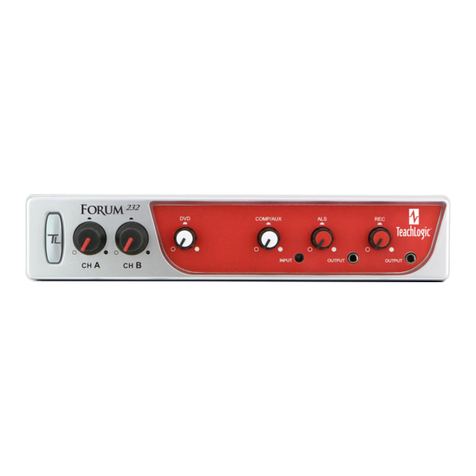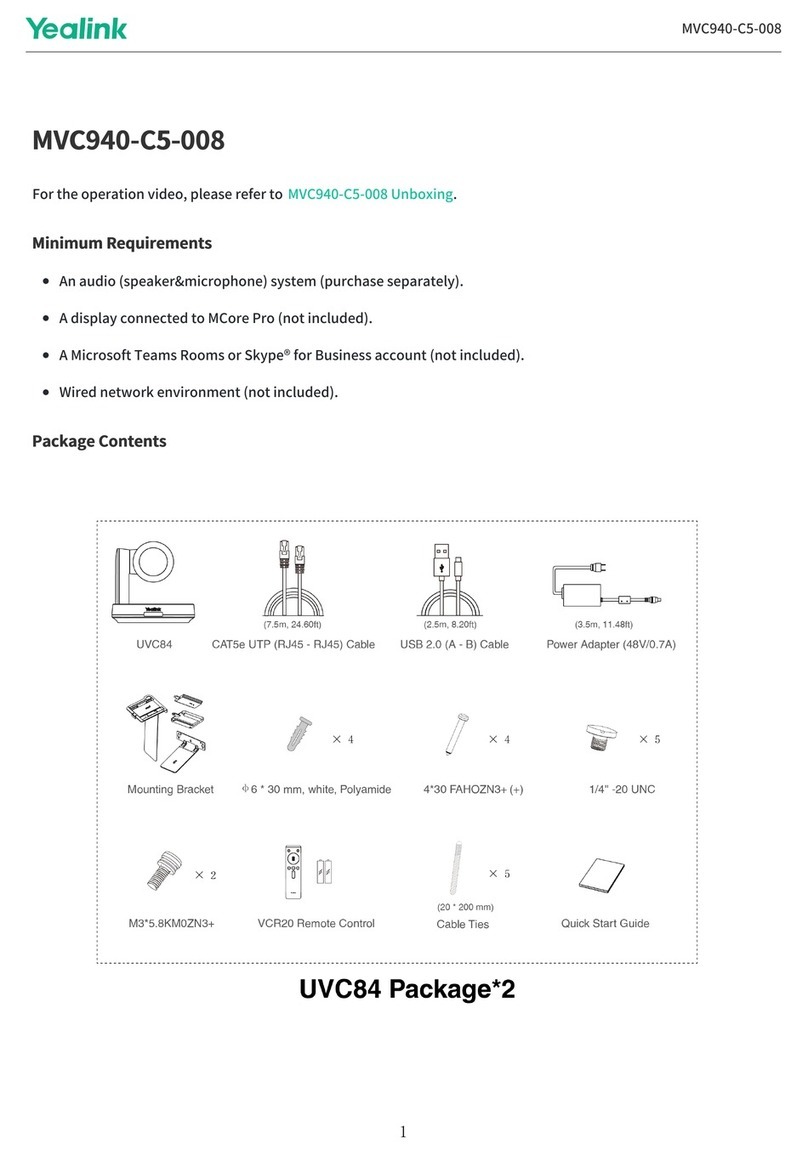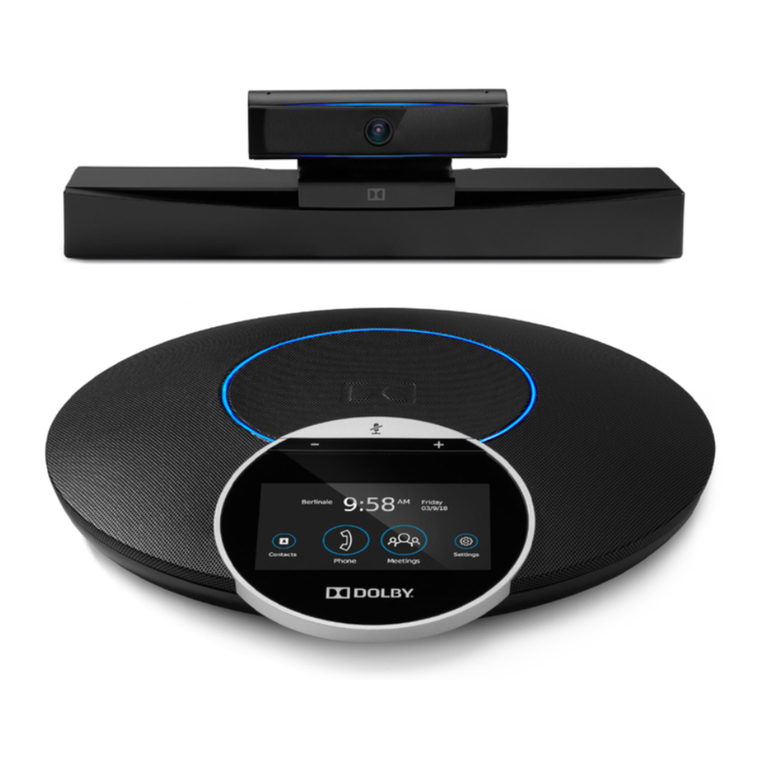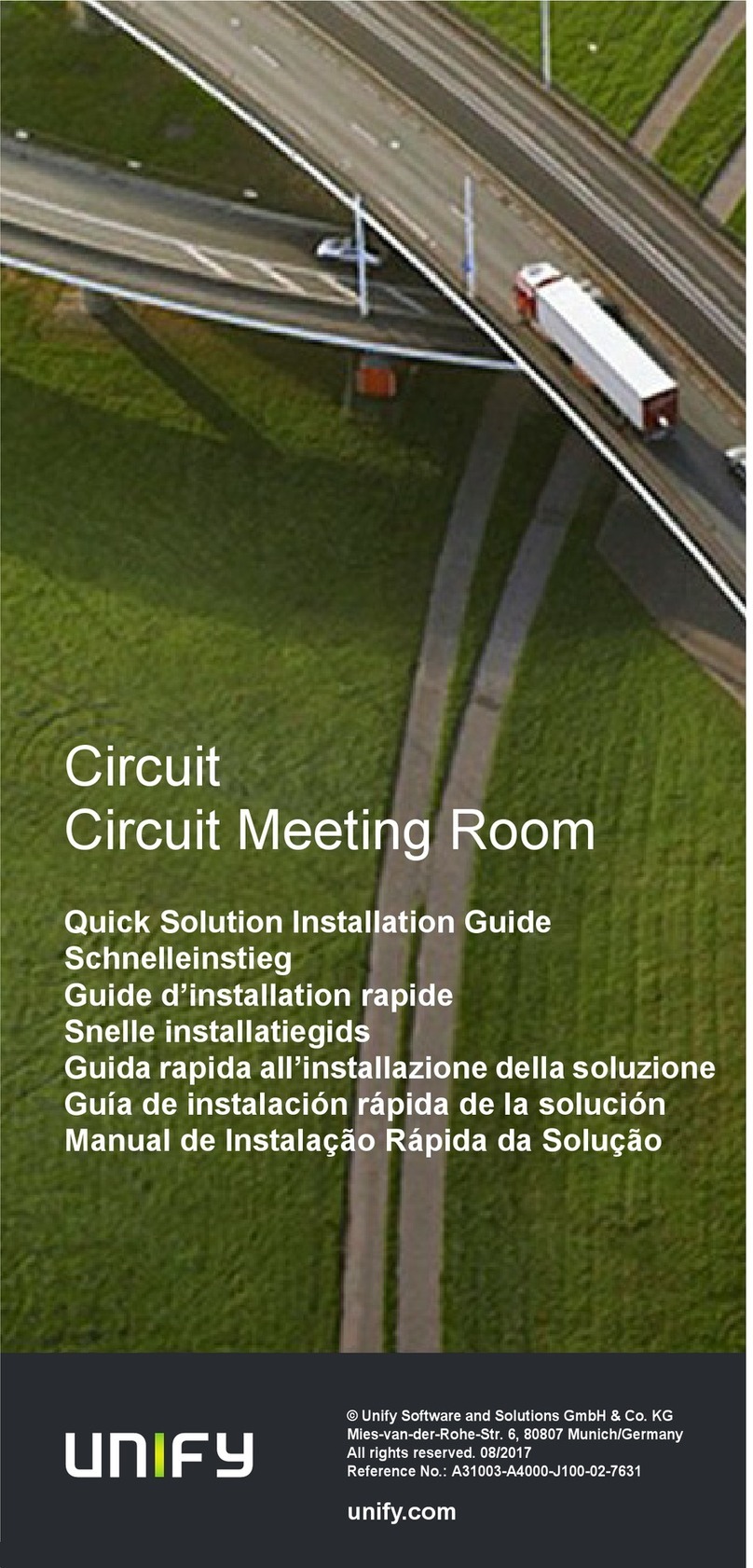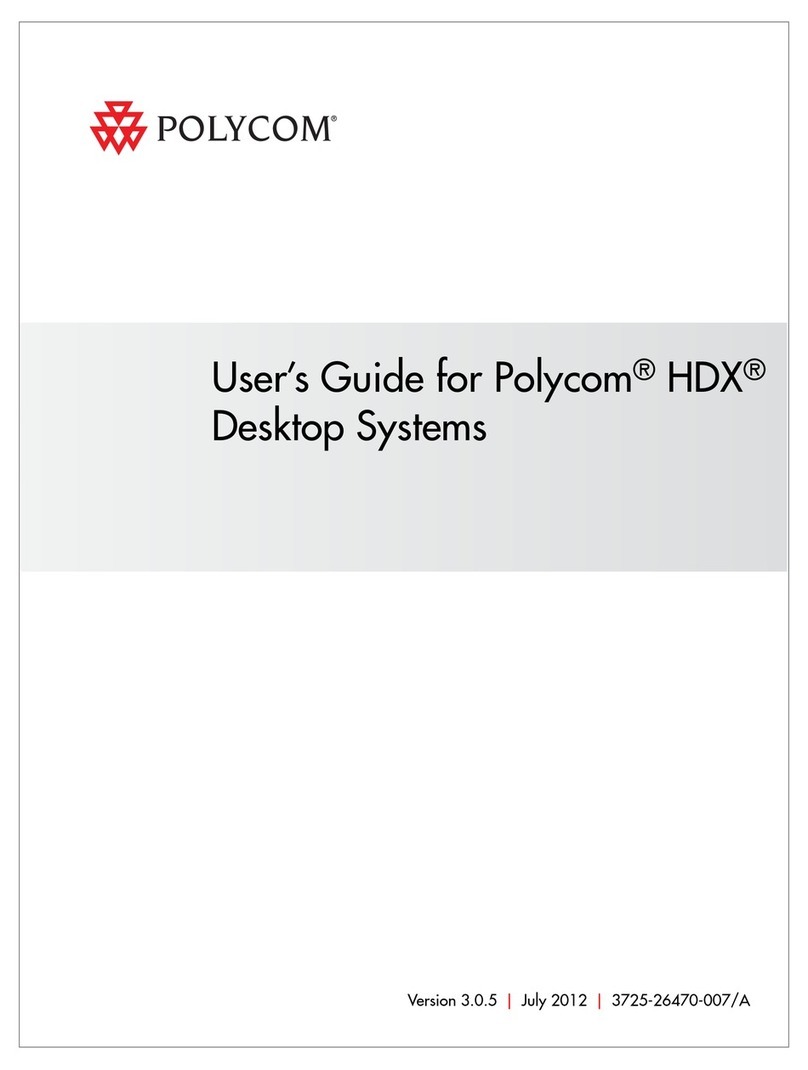Quinta – Safety Instructions 5
Charger
• Never use the charger as a mains power supply unit for electrical
equipment.
1.2 Quinta MU Microphone Unit
Set up
• Always position the microphone units on a secure surface. If the
microphone unit falls down, you can hurt yourself or others or
damage the microphone unit.
• To align the gooseneck microphone on the microphone unit and
to avoid twisting it too far and causing premature wear, please
note that the gooseneck must be bent no further than an angle
of 90° maximum.
Risk of injury
• If the microphone stations have a gooseneck microphone take
care that you do not injure yourself on this e.g. poke it into your
eye.
• The charging contacts of the microphone units can cause
damage to property, injuries or fire damage if they come into
contact with conductive material such as jewellery, keys or
chains. This closes the circuit and can thus cause the material
to heat up. To avoid this sort of unwanted circuit, the charging
contacts must be handled with caution. This applies particularly
if the microphone units are transported in a bag or some other
container together with metal objects.
Charging / rechargeable batteries
• When charging the microphone unit in the charger, take care to
ensure that you do not injure yourself when putting the station
in or taking it out.
• Only switch on the charger when you have inserted all micro-
phone units. Empty charging compartments should never be
touched during the charging process. You could receive an
electric shock.
• Avoid letting the rechargeable batteries in the microphone unit
become too deeply discharged. The rechargeable batteries could
be damaged and the life of them could be reduced.
• If battery operated equipment is not used for a lengthy period
(e.g. 1 year) the self-discharge of the battery could be
accelerated. The temperature for long-term storage should be
between +10° C and +30° C.
• If the microphone units are not used for several months, the
rechargeable batteries in the microphone units should be
charged up at least twice a year in order to avoid them running
out and deterioration in the performance due to self discharge.
Volume
•If the participants of a meeting use a headphone with the Quinta
microphone stations, please make sure that the volume is not set
too high via the Quinta Conference software or the microphone
unit itself. Otherwise, the hearing of the participants could
permanently be damaged.
1.3 Quinta TH Handheld Transmitter
Use
• Protect the transmitter from moisture and sudden impacts. You,
or others, could either injure yourself or damage the transmitter.
• Switch off the transmitter before changing the battery.
• Do not blow into the microphone. In a condenser microphone
this could damage the transducer. It is preferable to carry out a
speech trial.
NiMH rechargeable batteries, alkaline batteries
• The Quinta TH handheld transmitter can be operated with two
NiMH rechargeable batteries or alkaline batteries (AA LR6
Mignon).
• The commercial batteries can have a length tolerance of 2 - 3 mm.
When changing the battery always ensure a good contact.
• If the transmitter is not being used for weeks or months, please
remove the batteries. Batteries can leak when not being used
for a long time and corrode the conductor strips and components.
Repair is no longer possible. In this case all warranty claims are
null and void. The description “leak proof” on batteries is no gua-
rantee that they will not run out.
• Never take batteries apart yourself. The battery acid contained
will damage skin and clothing.
• If abused or misused, rechargeable batteries may leak. In ex-
treme cases, they may even present an explosion, heat, fire,
smoke or gas hazard.
• Never expose batteries to excessive heat such as sunshine, fire
or the like.
Charging/charging contacts
• Avoid letting the rechargeable batteries become too deeply
discharged. The rechargeable batteries could be damaged and
the life of them could be reduced.
• If battery operated equipment is not used for a lengthy period
(e.g. 1 year) the self-discharge of the battery could be
accelerated. The temperature for long-term storage should be
between +10° C and +30° C.
• If the handheld transmitter is not used for several months, the
rechargeable batteries in the transmitter should be charged up
at least twice a year in order to avoid them running out and
deterioration in the performance due to self discharge.
• From time to time the battery and charging contacts of the
Quinta TH handheld transmitter should be cleaned with a
lint-free soft cloth moistened with spirits or alcohol. Please
remove the batteries from the battery compartment before
cleaning.
• The charging contacts of the handheld transmitter can cause
damage to property, injuries or fire damage if they come into
contact with conductive material such as jewellery, keys or
chains. This closes the circuit and can thus cause the material
to heat up. To avoid this sort of unwanted circuit, the charging
contacts must be handled with caution. This applies particularly
if the handheld transmitter is transported in a bag or some other
container together with metal objects.
1.4 Disposal
• Old batteries may contain substances that are harmful to your
health and environment.
• If you throw away the Quinta TH transmitter, please remove the
batteries. For removing the batteries, please refer to chapter
“How to insert the batteries“.
• Dispose used batteries always according to the applicable
disposal regulations. Please do not throw used battery packs into
the fire (danger of explosion) or your household rubbish, take
them to your local collection points. The return is free and
required by law. Please dispose discharged batteries only.
• The device provides built-in rechargeable batteries, which you
cannot remove yourself, therefore, return the device to your
dealer for recycling when the batteries are exhausted.
• All batteries are recycled to reclaim valuable material such as
iron, zinc or nickel.
•Disconnect power plug first – then move charging case.
• In order to avoid damages to the mains connection and
a possible electrical shock caused by this, you must not
move the charging case when it is connected to an AC
outlet.






















